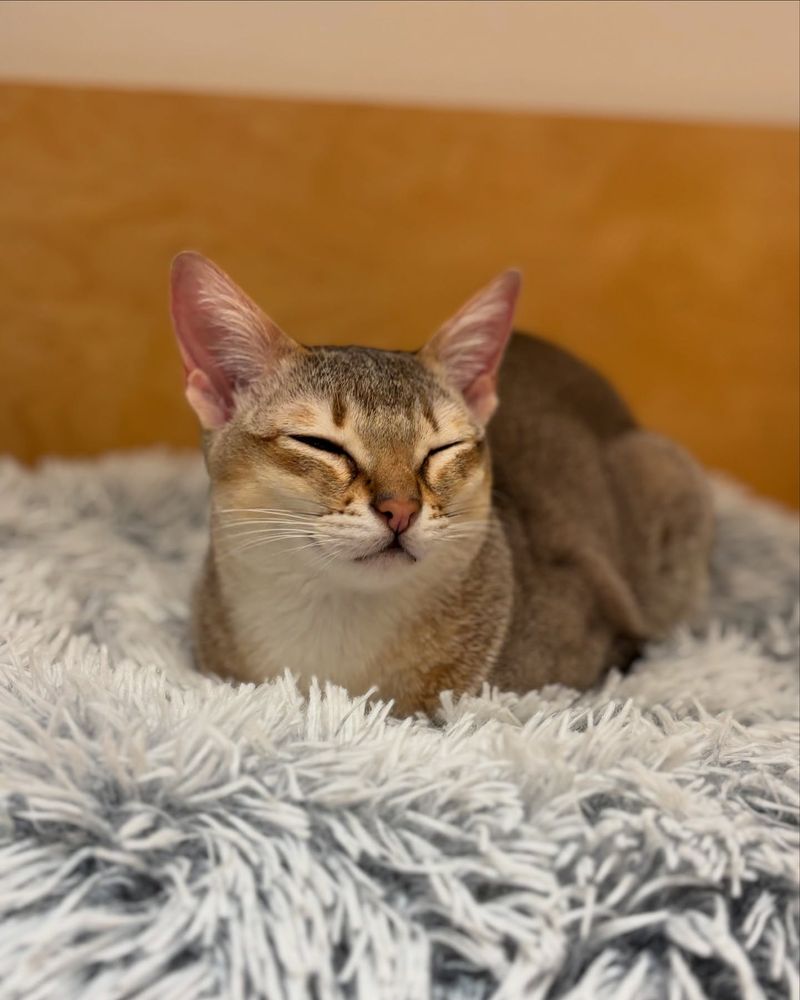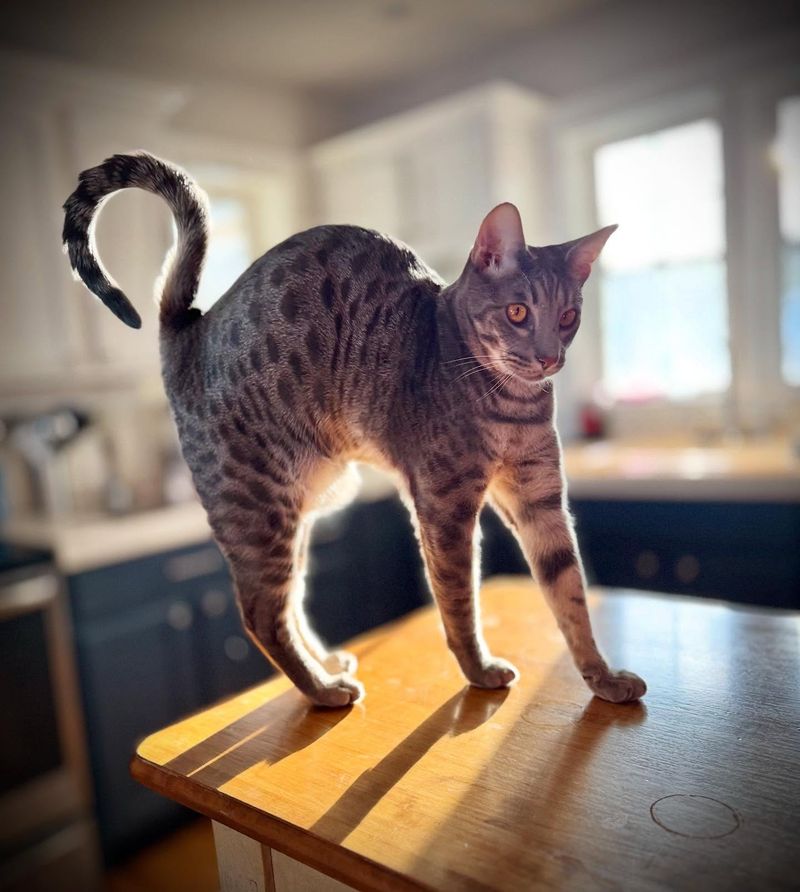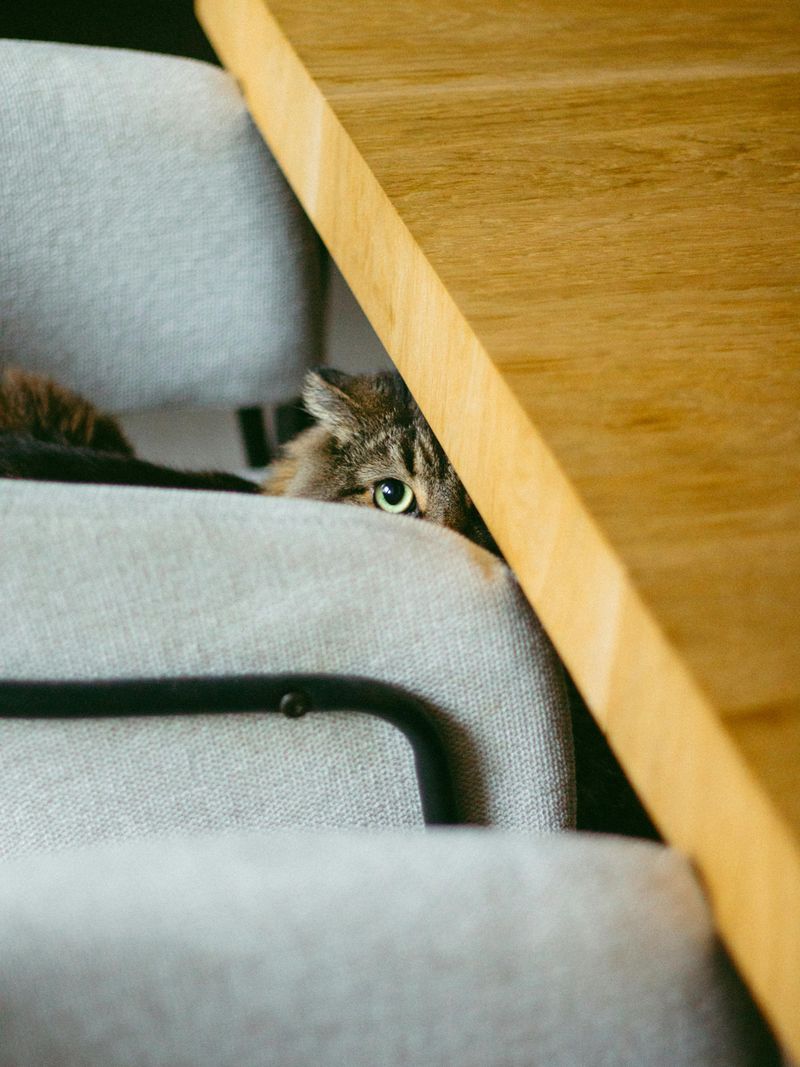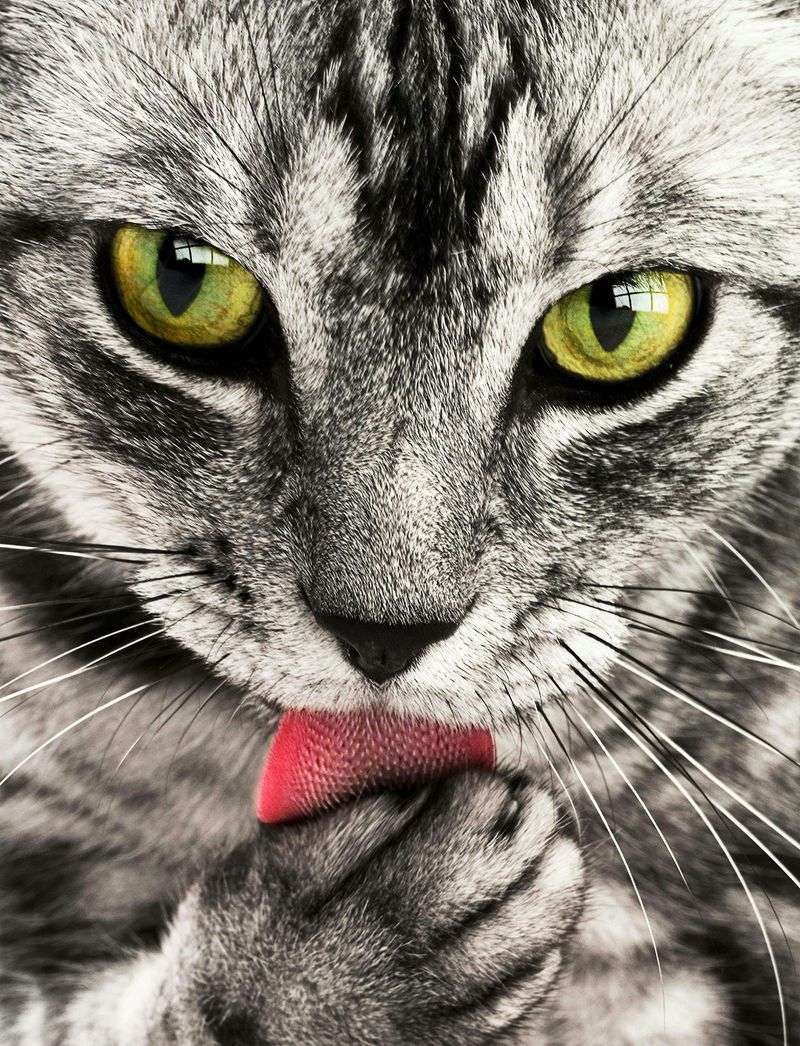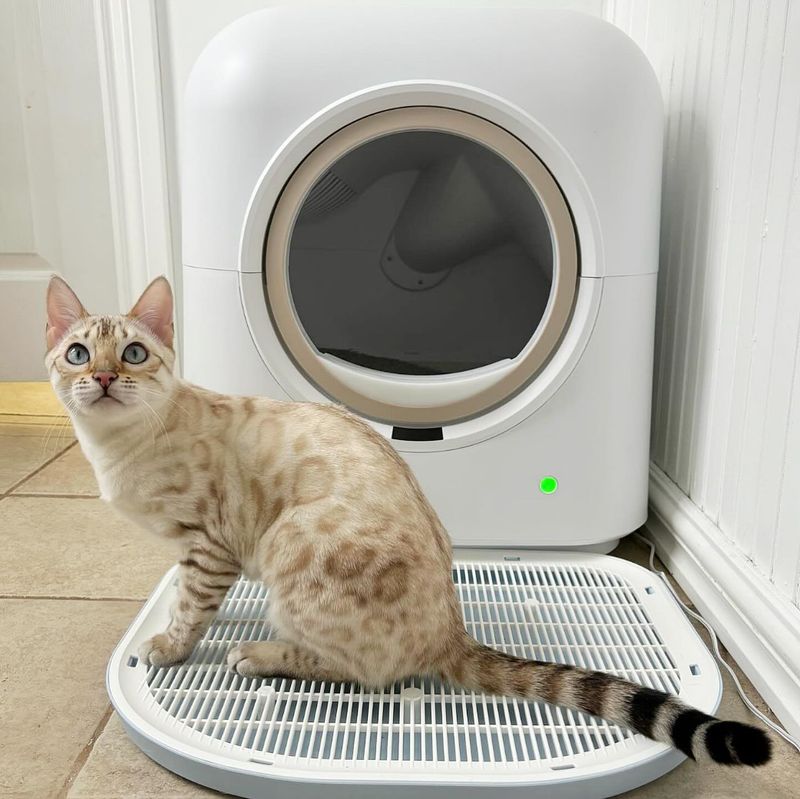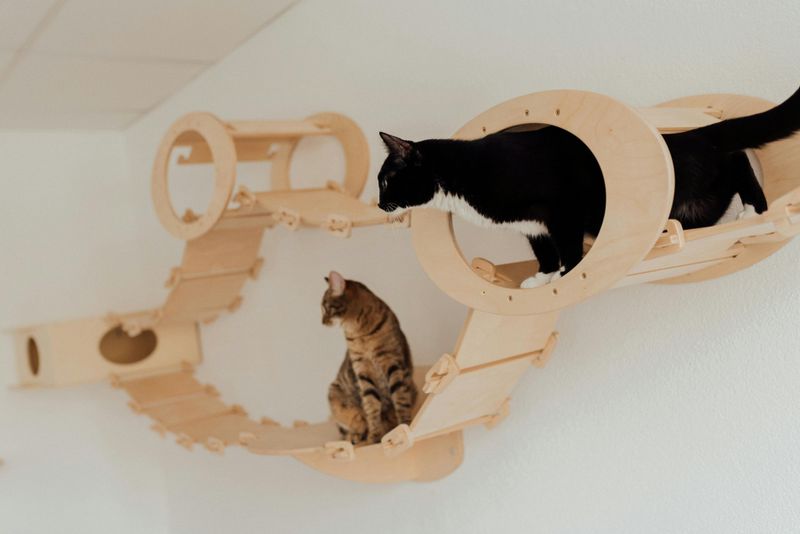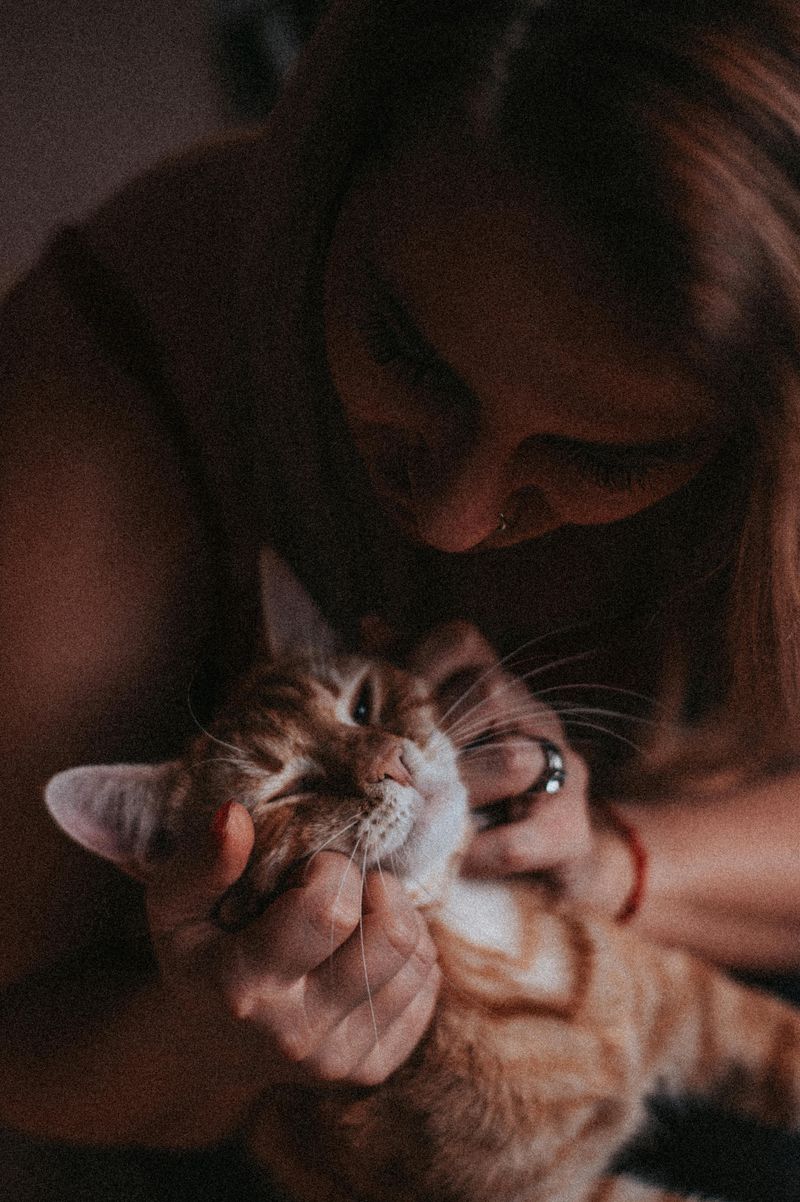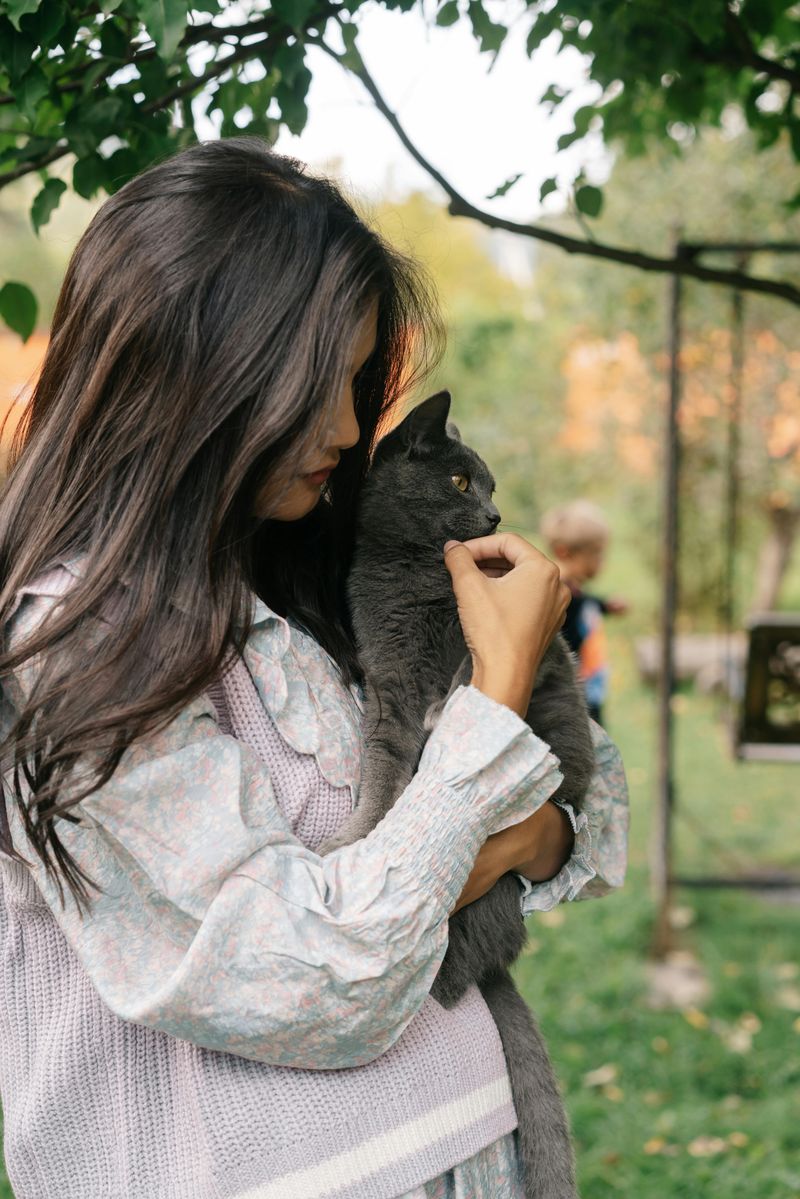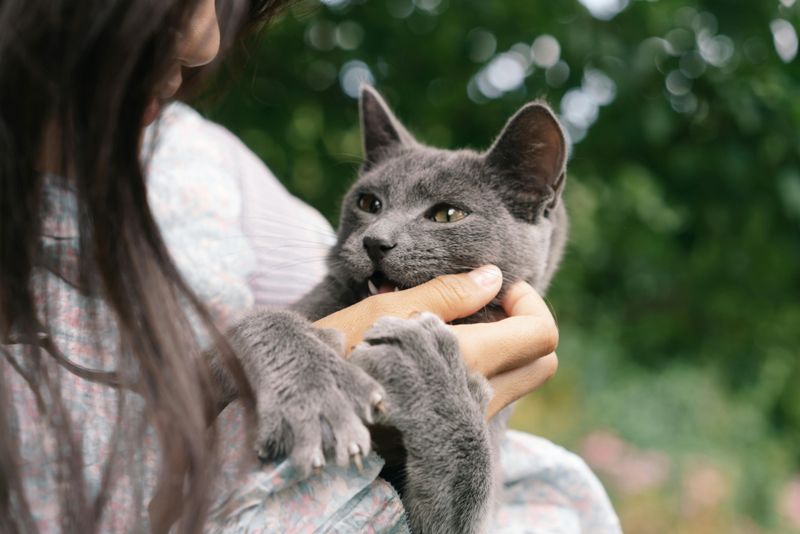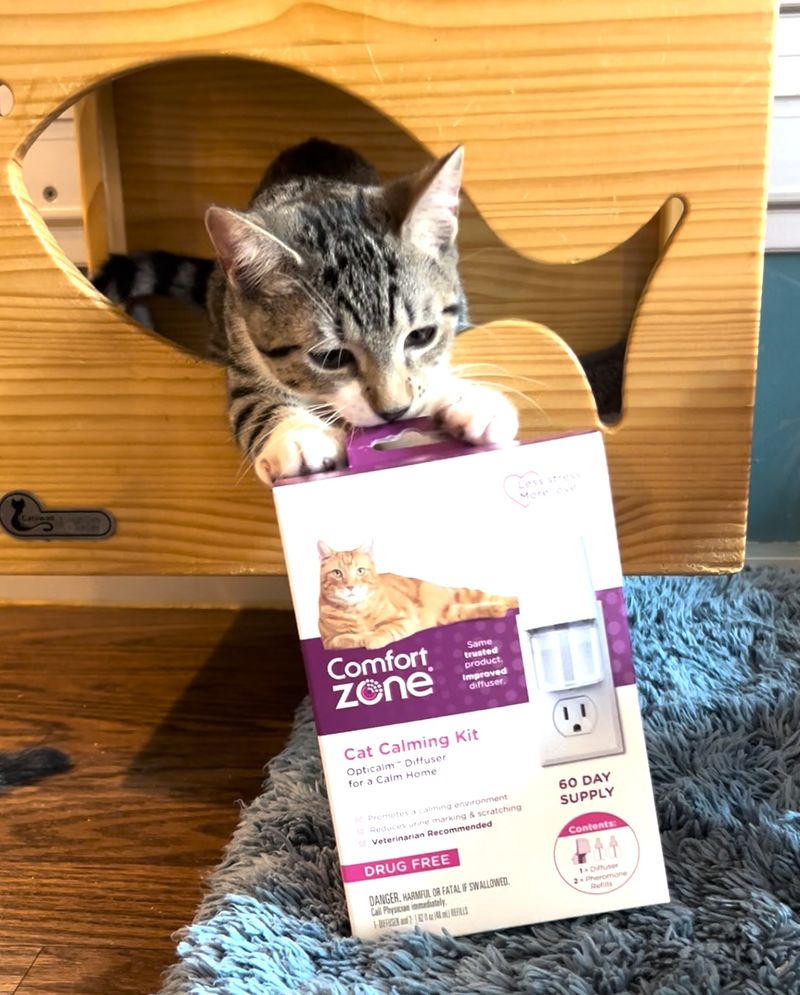📖 Table of Content:
- 1. Flattened Ears Signal Danger
- 2. Puffed Tail and Arched Back Means Terrified
- 3. Hiding Under Furniture Shows Overwhelm
- 4. Excessive Grooming Reveals Anxiety
- 5. Frozen Stillness Indicates Extreme Fear
- 6. Inappropriate Elimination Shows Distress
- 7. Solution: Create a Quiet Retreat Space
- 8. Solution: Use Gentle Blinking for Reassurance
- 9. Solution: Speak in Soothing, High Pitches
- 10. Solution: Offer Treats Without Pressure
- 11. Solution: Maintain Predictable Routines
- 12. Solution: Use Pheromone Products Strategically
Cats might have a reputation for being aloof or unpredictable, but when they lash out, hide, or act strangely, it’s rarely random. Chances are, your cat is scared—and they’re doing their best to tell you. The problem? Most of us don’t speak fluent “cat.”
Unlike dogs, cats tend to suffer in silence. Their fear often shows up in subtle body language and small behavior changes that are easy to miss—or worse, misread as stubbornness or bad behavior. But when we learn to recognize the signs of feline fear, we gain the power to respond with understanding instead of frustration.
Whether you’re dealing with a nervous new kitten, a rescue with trauma, or a confident cat who suddenly seems on edge, these insights will help you create a home where your feline feels safe, understood, and—most importantly—loved.
1. Flattened Ears Signal Danger
When a cat presses their ears flat against their head, it’s showing serious concern. This defensive posture prepares them for potential threats while minimizing vulnerable body parts. The flatter the ears, the more intense the fear.
You might notice this ear position during thunderstorms, fireworks, or when unfamiliar visitors enter your home. Even confident cats will flatten their ears when truly frightened.
This signal often appears with other fear behaviors, creating a complete picture of your cat’s emotional state. Recognizing ear positioning helps you spot fear before it escalates to panic or aggression.
2. Puffed Tail and Arched Back Means Terrified
Halloween cat decorations mimic this classic fear posture for good reason! A cat with a puffed-up tail and arched back isn’t trying to look scary—they’re actually terrified themselves. This instinctive position makes them appear larger to potential threats.
The fur along their spine stands straight up (called piloerection), similar to how humans get goosebumps when frightened. This involuntary reaction occurs when adrenaline floods their system during fear responses.
If your cat displays this posture, something in their environment feels extremely threatening. Give them space rather than approaching, as even gentle pets might trigger defensive reactions.
3. Hiding Under Furniture Shows Overwhelm
Found your cat squeezed under the bed? Cats instinctively seek small, enclosed spaces when overwhelmed. These hiding spots provide security on all sides, helping them feel protected from potential dangers.
Some cats have favorite hiding spots they return to repeatedly when stressed. Others might discover new hideaways during particularly frightening situations. Respecting these safe zones is crucial for your cat’s emotional well-being.
Forcing a hiding cat out can damage trust and increase anxiety. The hiding behavior itself isn’t problematic—it’s a healthy coping mechanism. However, prolonged hiding (more than a day) might indicate ongoing stress or possible health issues requiring veterinary attention.
4. Excessive Grooming Reveals Anxiety
Cats often turn to grooming when stressed—it’s their version of nervous nail-biting. While normal grooming promotes relaxation, anxious grooming looks different: it’s repetitive, intense, and focused on specific areas until bald patches appear.
This self-soothing behavior releases endorphins that temporarily calm their nervous system. Unfortunately, it can develop into a harmful cycle where the cat creates painful skin irritations.
Environmental changes like new pets, moving homes, or schedule disruptions commonly trigger this behavior. If you notice your cat obsessively licking or chewing certain areas, particularly the belly, inner legs, or base of the tail, they’re likely experiencing significant anxiety requiring attention.
5. Frozen Stillness Indicates Extreme Fear
When cats become completely motionless—not even blinking or twitching their tails—they’re experiencing paralyzing fear. This freeze response represents the most extreme fear reaction, occurring when flight or fight options seem impossible.
A frozen cat might appear calm to untrained eyes, but their rigid body and fixed stare reveal their true state. Their breathing typically becomes shallow and rapid during these episodes.
This response often happens during veterinary visits or when cornered by perceived threats. Unlike playful stillness before pouncing, fear-freezing includes dilated pupils and tense muscles throughout the body. Recognizing this subtle signal helps prevent pushing your cat beyond their emotional limits.
6. Inappropriate Elimination Shows Distress
Finding unexpected puddles or piles outside the litter box often signals fear, not spite. Cats may suddenly avoid their litter box when experiencing acute anxiety or feeling unsafe in their environment.
This behavior makes biological sense—animals in the wild avoid leaving scent markers when they feel vulnerable to predators. Your frightened feline might choose unusual locations like closets or behind furniture when stress overwhelms their normal habits.
Cats with established litter box routines don’t change without reason. Recent household changes, new pets, visitors, construction noise, or even rearranged furniture can trigger this fear response. Always rule out medical issues first, then address potential environmental stressors.
7. Solution: Create a Quiet Retreat Space
Every cat deserves their own sanctuary—a dedicated space where they can escape overwhelming situations. A quiet corner with a covered bed provides both physical and psychological security for anxious felines.
Position this retreat away from household traffic, loud appliances, and windows where outdoor cats might be visible. Add familiar-smelling blankets and perhaps an unwashed t-shirt carrying your scent to enhance comfort.
The ideal retreat includes multiple exit points so your cat never feels trapped. Teach children and visitors that this space is off-limits when the cat retreats there. This consistent boundary helps your cat build confidence, knowing they always have somewhere safe to go.
8. Solution: Use Gentle Blinking for Reassurance
The slow blink is cat language for “I feel safe with you” and works wonderfully to reassure frightened felines. When your cat seems nervous, try sitting at their level a few feet away and slowly closing your eyes for a second or two before opening them again.
This gesture communicates peaceful intentions because vulnerable eye closing signals you don’t view them as a threat. Many cats will eventually return this blink—a heartwarming moment of trust.
Maintain soft facial expressions during this interaction. Avoid staring directly without blinking, which cats interpret as threatening. This technique works best when performed regularly, not just during scary situations, helping build lasting trust bonds.
9. Solution: Speak in Soothing, High Pitches
Cats respond positively to specific vocal qualities when frightened. High-pitched, soft tones communicate friendliness and safety in feline language. Their sensitive hearing easily distinguishes between threatening low growls and reassuring higher pitches.
When comforting a scared cat, try gentle “hello” greetings in slightly elevated, sing-song patterns. Keep volume low—whisper-talking works especially well for skittish cats.
Avoid sudden loud exclamations or frustrated tones, even when stressed yourself. Cats recognize emotional content in human voices more accurately than we realize. Consistent use of these calming vocal techniques helps your cat associate your voice with safety, gradually building their confidence during frightening situations.
10. Solution: Offer Treats Without Pressure
Food speaks volumes to fearful cats, but how you offer treats matters tremendously. Rather than approaching directly, place special high-value treats nearby and move away, allowing your cat to approach on their terms.
Freeze-dried chicken, small tuna pieces, or commercial treats with strong aromas work best for breaking through fear barriers. The powerful connection between positive food experiences and safety helps rewrite negative associations.
Never force interactions by holding treats while requiring petting or handling. Instead, create a pattern where good things happen predictably in frightening contexts. This technique, similar to counterconditioning in behavioral science, gradually transforms scary situations into opportunities for rewards.
11. Solution: Maintain Predictable Routines
Cats thrive on consistency—knowing exactly when meals, playtime, and quiet periods occur creates a foundation of security. During frightening situations, maintaining these routines becomes even more crucial for reducing anxiety.
Feed at regular times using the same dishes and locations. Schedule interactive play sessions that follow familiar patterns. Even cleaning the litter box at consistent times helps reinforce environmental stability.
When major changes must occur (moving homes, new family members), preserve as many routine elements as possible. This predictability acts as an emotional anchor during turbulent times. Your cat learns that while some things change, core aspects of their life remain dependable—a powerful reassurance during frightening experiences.
12. Solution: Use Pheromone Products Strategically
Synthetic feline facial pheromones mimic the natural cheek-rubbing scents cats leave when they feel secure in their territory. These products come as plug-in diffusers, sprays, or wipes that create an invisible cloud of calming chemical signals.
Place diffusers in areas where your cat spends most time or where stressful events occur. For acute situations like carrier trips or thunderstorms, apply sprays to bedding or towels 15 minutes before exposure.
These products work best as part of a comprehensive approach rather than a standalone solution. Research shows approximately 70-90% of cats respond positively, though individual results vary. For maximum effectiveness, combine with environmental management and behavior modification techniques.

